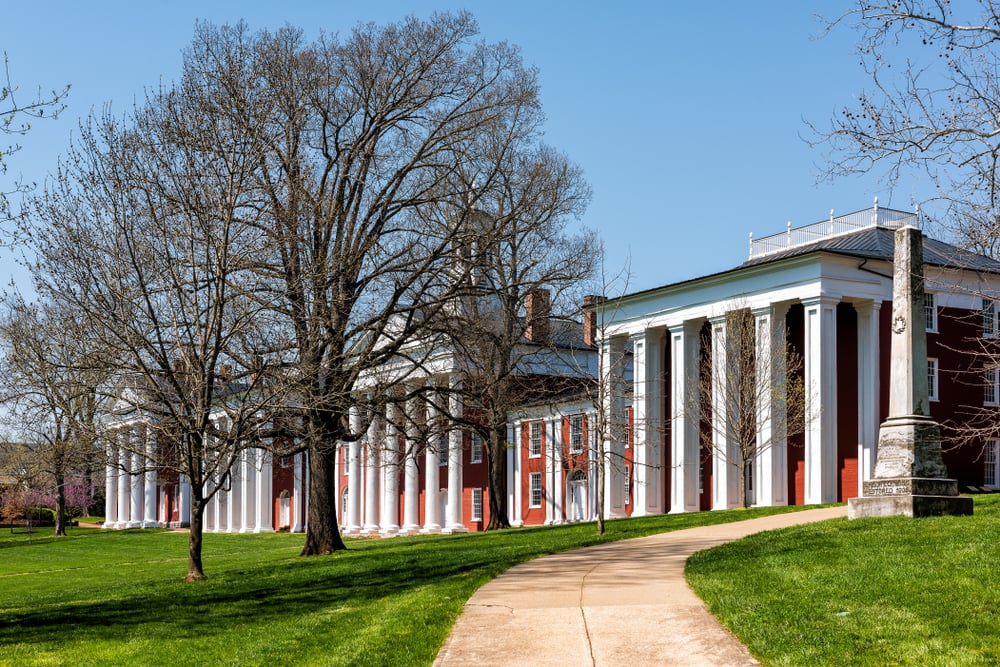
Sometimes, I find myself longing for a peaceful escape from the hustle and bustle of daily life. Northwest Virginia offers some of the most serene and secluded towns, perfect for anyone seeking tranquility amidst nature’s beauty.
From hidden gems nestled in the Shenandoah Mountains to tiny hamlets with expansive views, these towns provide a respite that feels worlds away from urban chaos.
I’d like to share with you 25 of my favorite secluded towns in Northwest Virginia, each offering its own unique charm and a chance to unwind in the countryside.
Whether you’re looking for a quiet retreat or considering a move, these places might just be the haven you’ve been searching for. Let’s count down these tranquil spots, starting with number 25.
25. Waterford: Stone-Lane Silence in a Landmark Village
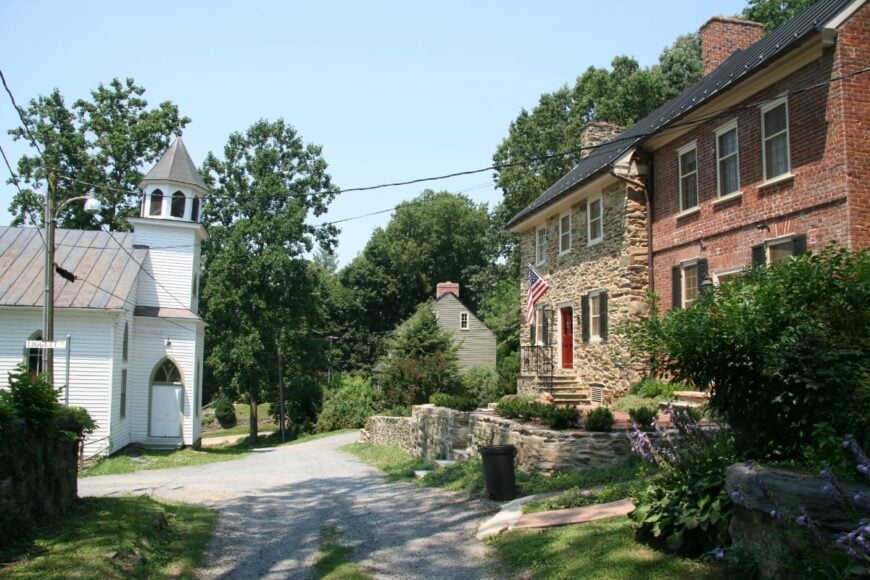
Waterford feels hushed the moment tires meet its old stone lanes, a village tucked into pasture folds and hedgerows that soften every sound. Seclusion comes from its small scale and the way surrounding farms keep modern bustle politely at arm’s length.
Mornings bring birdsong off stacked fieldstone; evenings lean golden against historic brick and timber. Browse tiny artisan shops, linger by the mill race, walk quiet back roads for fox and firefly, or picnic under big sycamores along Catoctin Creek.
Heritage tourism and a handful of local trades keep the lights glowing without crowding the streets. The vibe is storybook and steady, more whisper than headline. It’s a place that slows your breath and keeps it slow.
Where is Waterford?
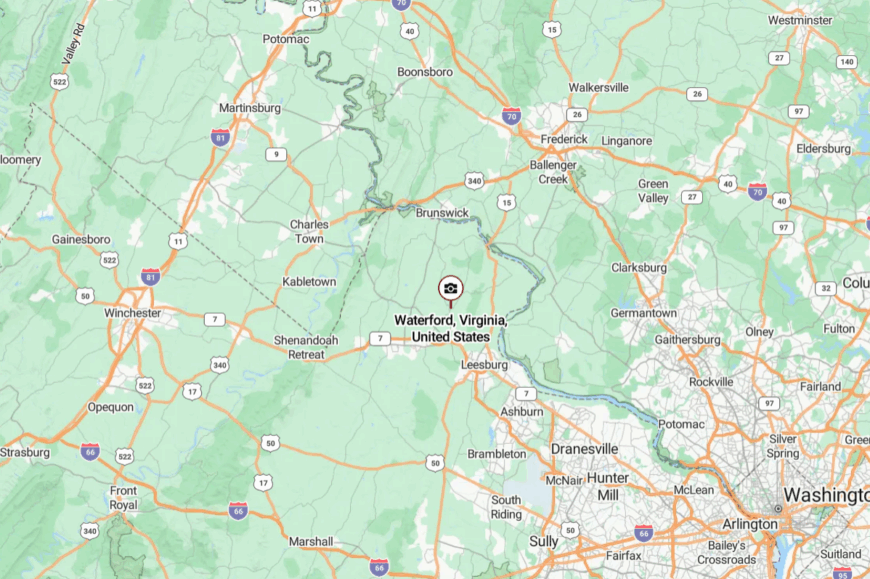
Set in northwestern Loudoun County near the Potomac, Waterford sits about 7 miles northwest of Leesburg. You reach it off Route 9 or Route 287, then slip onto narrower lanes that meander through farmland.
Major highways run nearby, but they don’t run through—leaving town wrapped in its own quiet. Close enough for a day trip, far enough to feel like you stepped back a century.
24. Unison: Horse-Country Hush and Fenceline Horizons
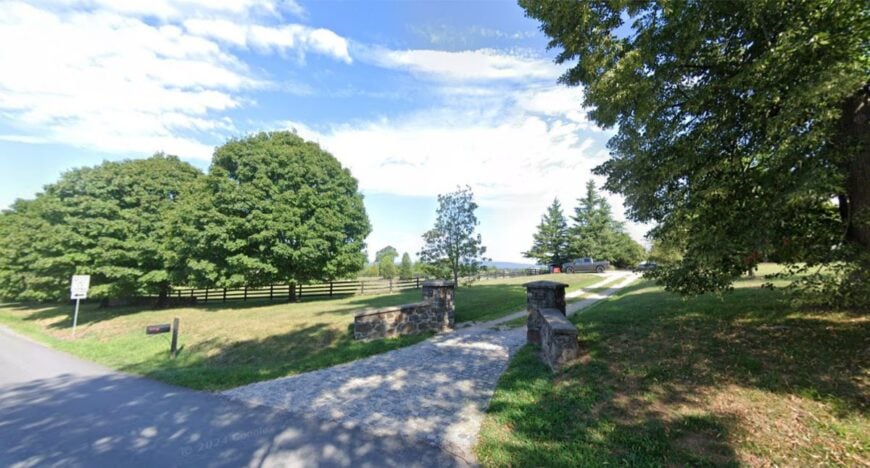
Unison is a crossroads hamlet where white-board fences meet wind-brushed grass and time ambles like a good horse. Its seclusion comes from low density and an intricate web of backroads that discourage hurried traffic.
Dawn smells like hay and saddle leather; dusk brings whip-poor-wills across the hedgerows. Ride gravel loops beneath oak canopies, browse a porch-front country store, follow Civil War byways, or watch a local schooling show under a big blue sky.
Small farms, equestrian work, and cottage trades set the rhythm. The vibe is genteel and grounded—quiet competence wrapped in pasture light. It’s the kind of calm you can hear.
Where is Unison?
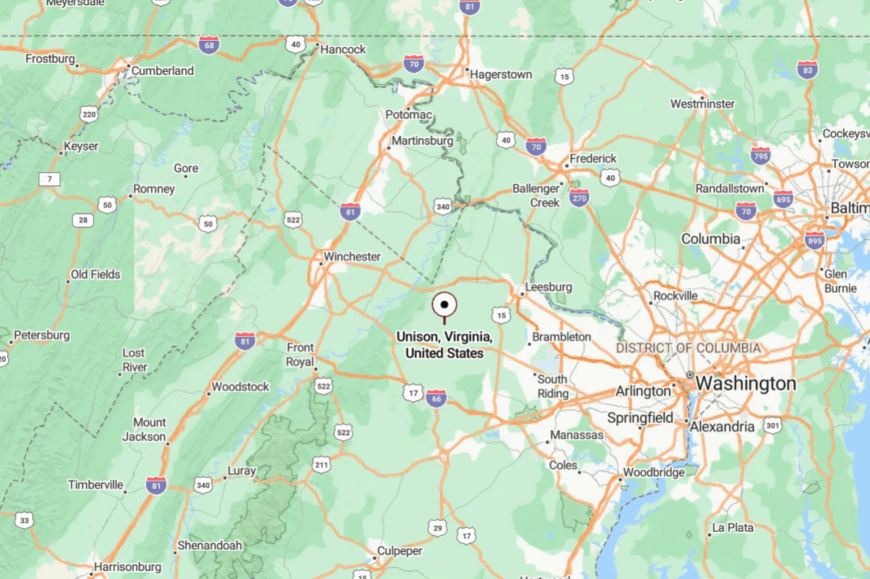
Unison lies in western Loudoun County between Middleburg and Waterford. From US-50 or Route 7, you slip onto Unison Road and other sleepy lanes that stitch through horse farms.
The last miles are all gates, hedges, and long sightlines. It’s close to Middleburg’s bustle, but the fields keep voices low.
23. Philomont: Hedge-Row Lanes and Porch-Light Evenings
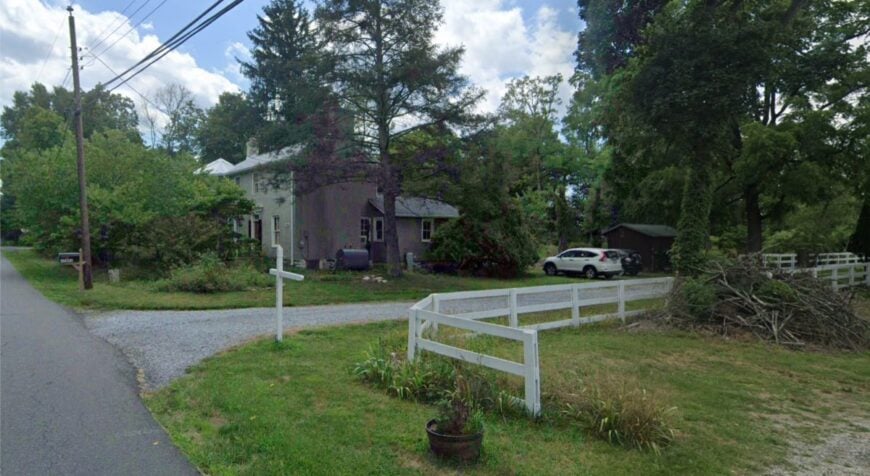
Philomont keeps its voice to a murmur, a village clustered around a country store and framed by miles of hedgerows. Seclusion settles in thanks to rolling farmland and a lack of through-routes that naturally slow everything down.
Dogs nap on porches; the afternoon breeze rattles feed-store flags. Grab coffee at the store, wander quiet lanes for barn quilts, ride country loops on two wheels, or browse weekend craft tables in the shade.
The local economy leans on farms, farriers, and artisans—small, deft, and neighborly. The vibe is warm and plainspoken, with a knack for making strangers feel like regulars. It’s the kind of quiet that feels hand-made.
Where is Philomont?
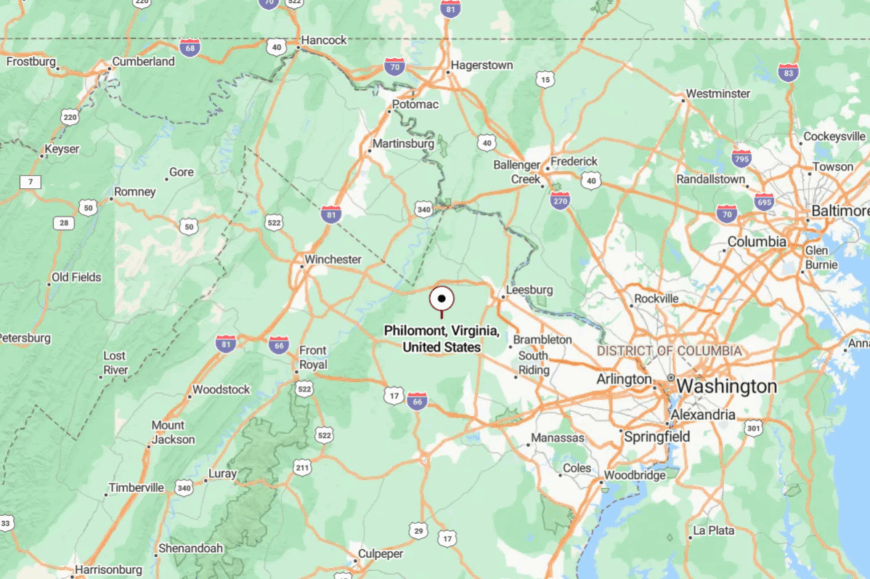
Southwest of Purcellville in western Loudoun County, Philomont sits off Snickersville Turnpike. You leave US-50 or VA-7 and trade speed for curves and fence lines.
The approach is a postcard of pasture and sky. It’s just minutes from town, yet it makes time behave.
22. Taylorstown: River-Bend Cottages and Sycamore Shade
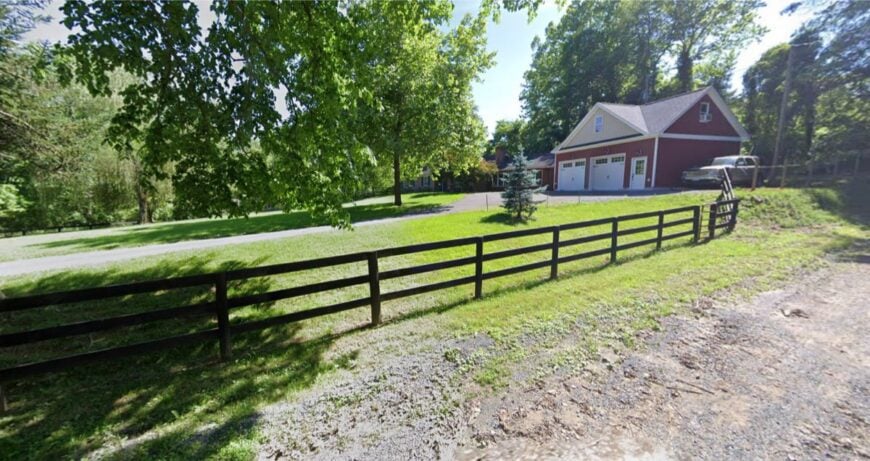
Taylorstown clings to a Potomac bend where sycamores lean over the water and gravel lanes end in green. Its secluded feel comes from the river’s edge, protective hills, and roads that prefer to dead-end rather than pass through.
You’ll hear woodpeckers more than engines here. Walk to the old canal traces, paddle a lazy reach of the Potomac, hunt spring wildflowers along limestone ledges, or linger by a weathered churchyard at dusk.
Commuters exist, but the land speaks first—small trades, homesteads, and river weekends. The vibe is riparian and unhurried, a cool pocket of light and leaves. It’s where the river keeps your secrets.
Where is Taylorstown?
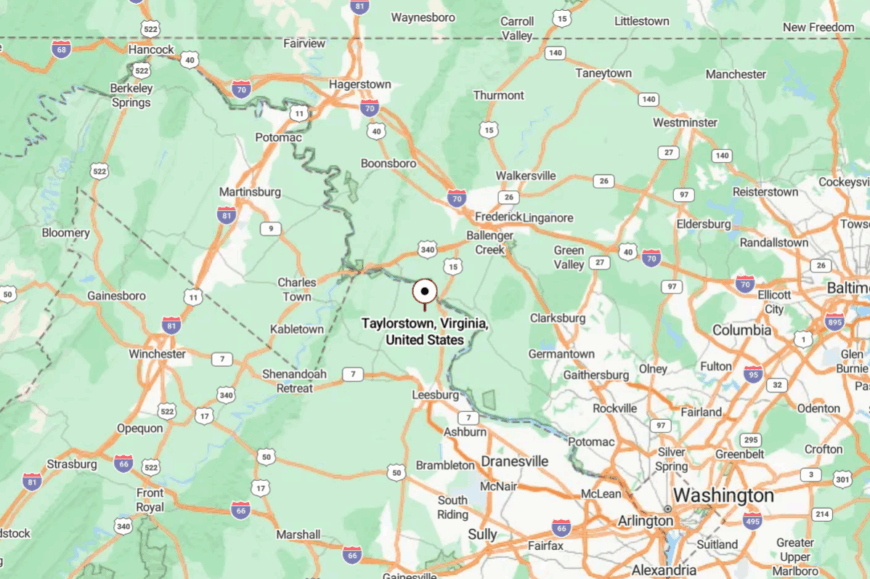
In far northern Loudoun County near the Maryland line, Taylorstown sits about 8 miles north of Leesburg. Access is via Route 15 to local lanes that drop toward the river.
There’s no major highway in the hollow—just water, rock, and trees. It’s close on the map, but it feels like the edge of a different day.
21. Neersville: Gap-Side Meadows Under Short Hill

Neersville rests in a narrow fold between Short Hill Mountain and the Blue Ridge, a settlement of meadows, orchards, and stone walls. The mountains cradle it from noise, and the old byways refuse to hurry, giving the place its hush.
At sunrise, the ridge shadows stretch long; by night, the stars feel almost touchable. Hike up to Bears Den overlooks, bike the old turnpike, visit nearby vineyards, or trace Civil War lanes where history still lingers in the hedges.
Small farms and seasonal work tie neighbors together. The vibe is spare and luminous—air, grass, and ridge light. It’s the kind of quiet that carries for miles and still stays soft.
Where is Neersville?
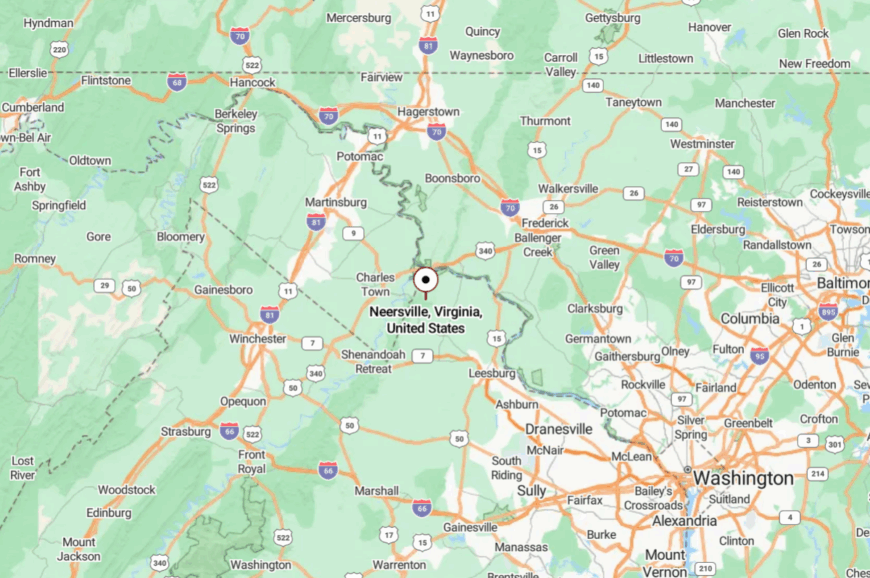
On Loudoun’s western edge near Harpers Ferry, Neersville sits south of Route 9 in the shadow of the Blue Ridge. You thread in from VA-671 and a patchwork of backroads that cling to the slopes.
The gap collects fog and keeps traffic down. Arriving feels like slipping behind a curtain of trees.
20. Delaplane: Vines, Stone, and Fox Country Stillness
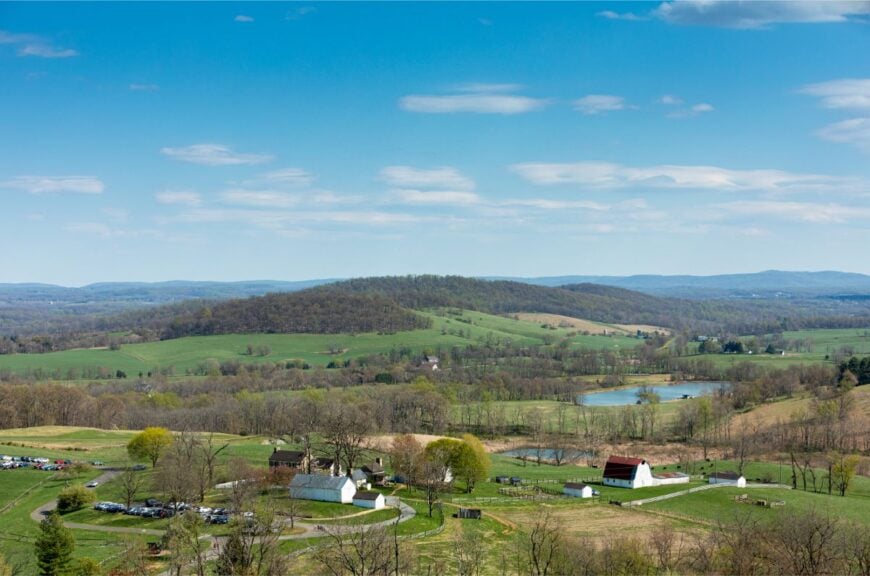
Delaplane is vineyard country, wearing a quiet grin—low hills, stone walls, and barns that have watched a hundred harvests. Seclusion rests in big parcels and winding lanes that drift off US-17 into hush.
Most days smell like grapes and clover; most nights like cooling stone. Taste flights at hillside wineries, ramble through Sky Meadows State Park, follow gravel to a historic rail stop, or picnic beneath oaks that remember cavalry.
Viticulture, grazing, and gentle tourism share the workload. The vibe is pastoral and polished without losing its mud-on-boots heart. It’s where a glass of something good pairs best with silence.
Where is Delaplane?
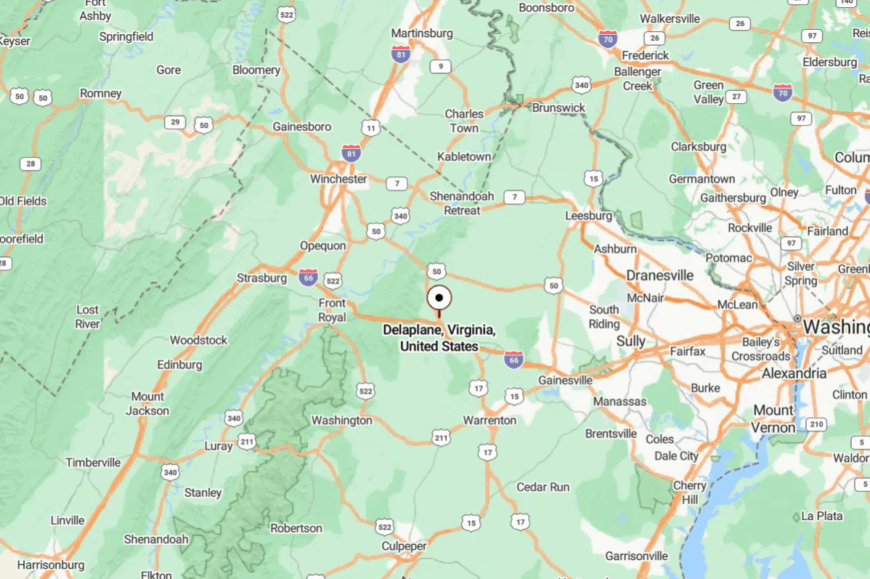
In northern Fauquier County along the Blue Ridge foothills, Delaplane sits about 50 miles west of D.C. You exit I-66, then immediately downshift onto US-17 and smaller vineyard roads.
The last miles trade exits for hedges. Close to the corridor, but the hills take over fast.
19. Rectortown: Rail Ghosts and Gravel-Calm Streets

Rectortown strings along a quiet lane where old depots, porches, and stacked stone hint at deeper stories. Its secluded vibe comes from being bypassed by big routes and buffered by horse farms that keep distance in every direction.
You can hear your footsteps on a Sunday morning. Stroll past Civil War markers, explore gravel spurs that roll between paddocks, sip a slow coffee by the green, or time a drive when the sun washes the clapboard gold.
Farming and boarding barns handle most of the week’s business. The mood is reflective and sure-footed, like a good horse on familiar ground. It’s the sort of calm that feels earned.
Where is Rectortown?

Central Fauquier County holds Rectortown just south of Marshall. From I-66, you slip down VA-55 and then narrower lanes that forget about speed limits.
The mountains sit close enough to hush the horizon. It’s a short drive, but it lands you in a longer hour.
18. Castleton: Blue Ridge Backroads and Porch-Stage Nights
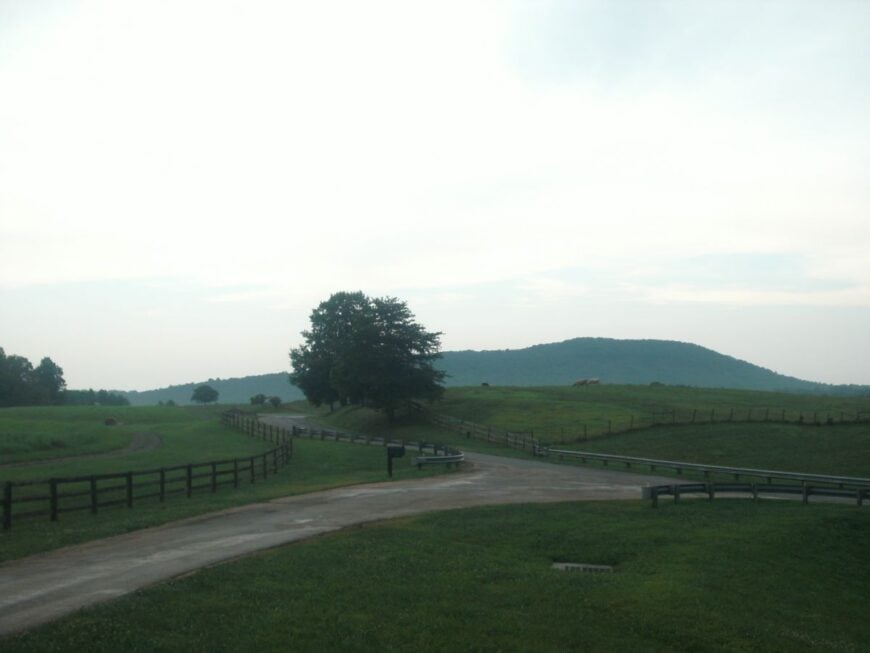
Castleton is a pocket of Rappahannock quiet, where meadows run to timber and the stars arrive early. Seclusion springs from big tracts, looping backroads, and the kind of topography that folds sound into itself.
Mornings carry birdsong and woodsmoke; evenings drift with music when a house concert lights up a porch. Drive scenic loops to Hazel River pull-offs, visit nearby farms for cheese and berries, catch a chamber recital if you’re lucky, or wander to a one-room church for a moment of hush.
Small agriculture and arts-minded neighbors share the load. The vibe is intimate and lightly bohemian. It’s a place that reminds you how well silence hosts a song.
Where is Castleton?
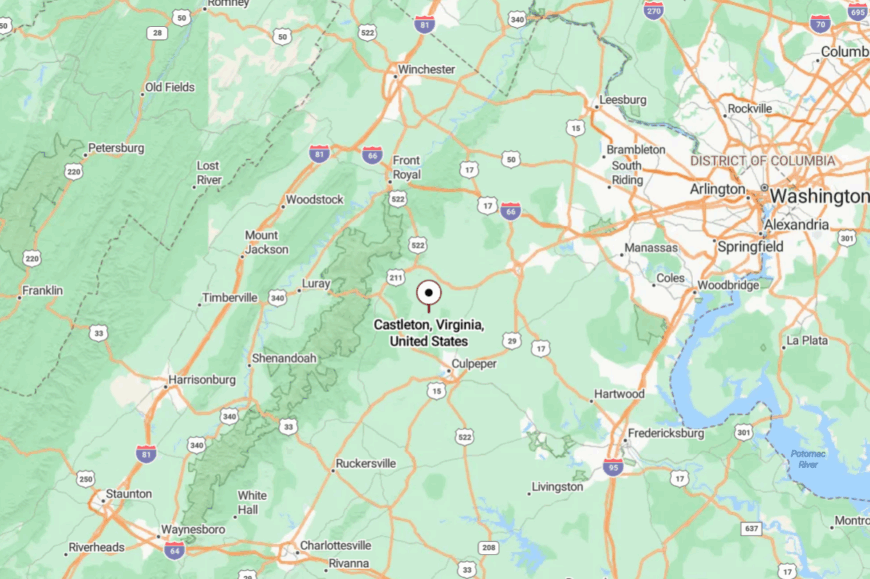
Southwest of Washington (the town) in Rappahannock County, Castleton sits about 20 miles west of Culpeper. You reach it via US-522 or US-211 to winding county roads that rise and fall with the hollows.
There’s no straight line—only pretty ones. Close enough for an evening drive, far enough to make the evening count.
17. Sperryville: Creekside Studios and Mountain Edges
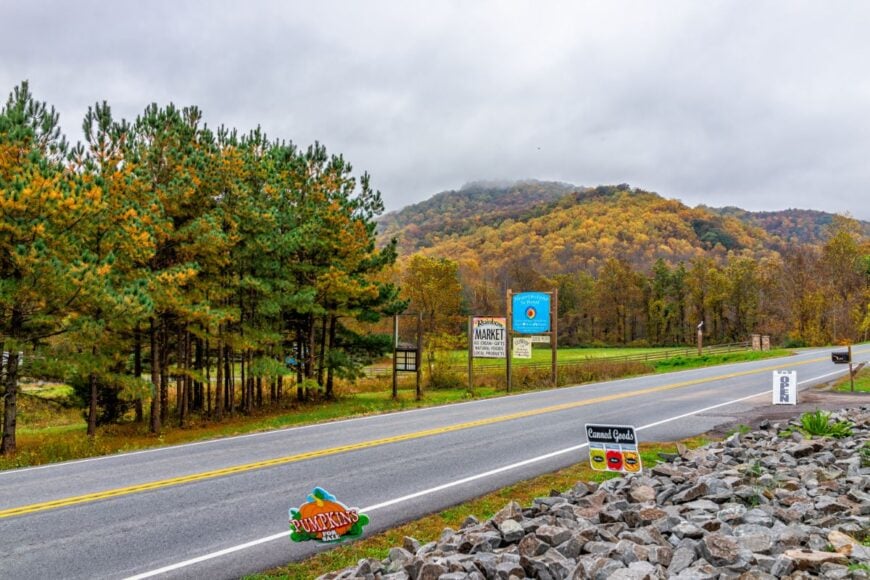
Sperryville gathers where streams cross and storefronts glow warm against mountain dusk. Its secluded feeling comes from being tucked under Skyline Drive, with the Blue Ridge hemming it in and the highways keeping their distance.
Mornings mean coffee and creek light; afternoons lead to trailheads. Hike Shenandoah National Park from nearby gaps, browse art studios, sample cider and small-batch roasts, or wade a riffle for native trout.
Tourism and small crafts mingle with old farm rhythms in a friendly balance. The vibe is artsy-rustic and quietly confident. It’s the kind of town that talks softly and keeps its promises.
Where is Sperryville?
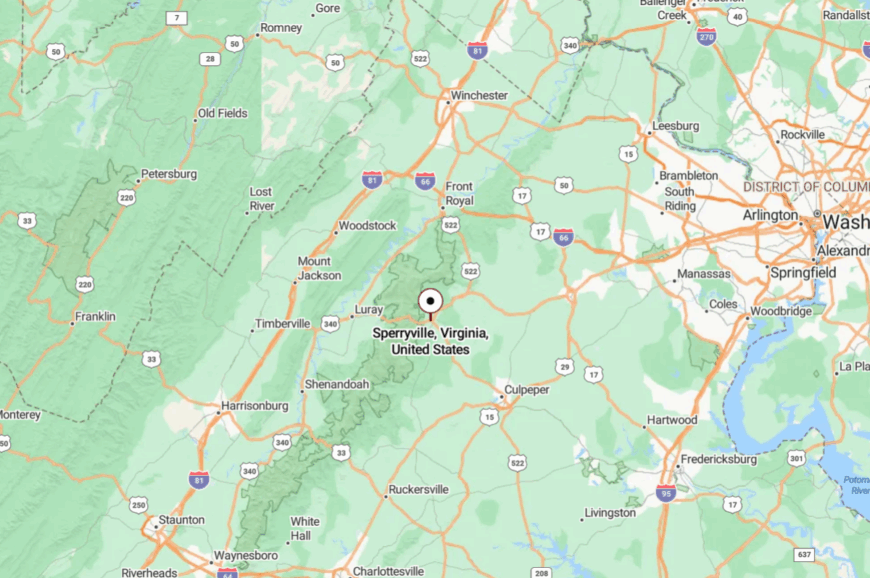
In eastern Rappahannock County at the foot of the Blue Ridge, Sperryville sits about 12 miles west of Culpeper. Access comes along US-211, then smaller streets that quickly become walkable lanes.
Skyline Drive towers just above, but the village keeps its own pace. Close to the park, far from the press.
16. Woodville: Hazel River Meadows and Unpaved Peace
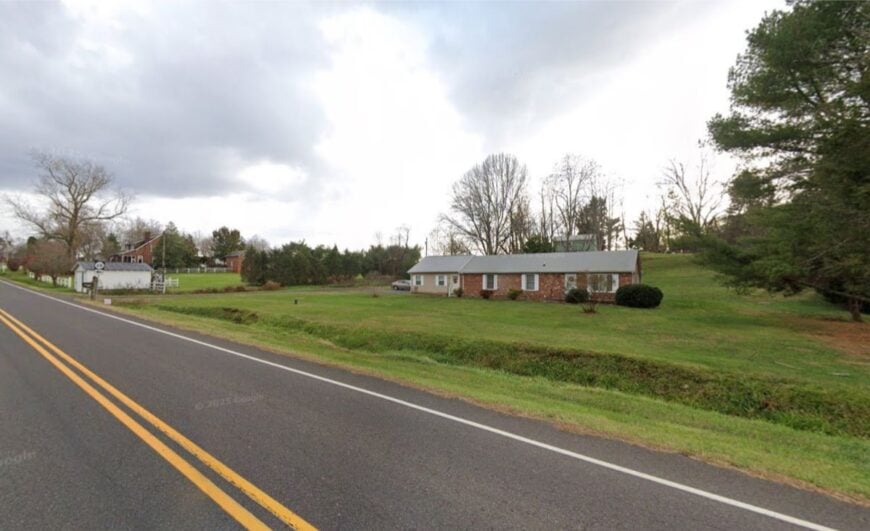
Woodville is more whisper than a dot on the map—meadows stitched by the Hazel River and homesteads set deep from the lane. Seclusion comes from low density and a web of backroads that prefer gravel to speed.
The soundtrack is bees in the clover and wind in the oaks. Stop by roadside produce stands, watch swallows sweep a barnyard, slip to river shallows, or wander toward nearby heritage farms and galleries.
Small agriculture and remote work share the weekdays here. The vibe is modest and sun-warmed, a good hat and a longer view. It’s a quiet that fits like a well-worn jacket.
Where is Woodville?
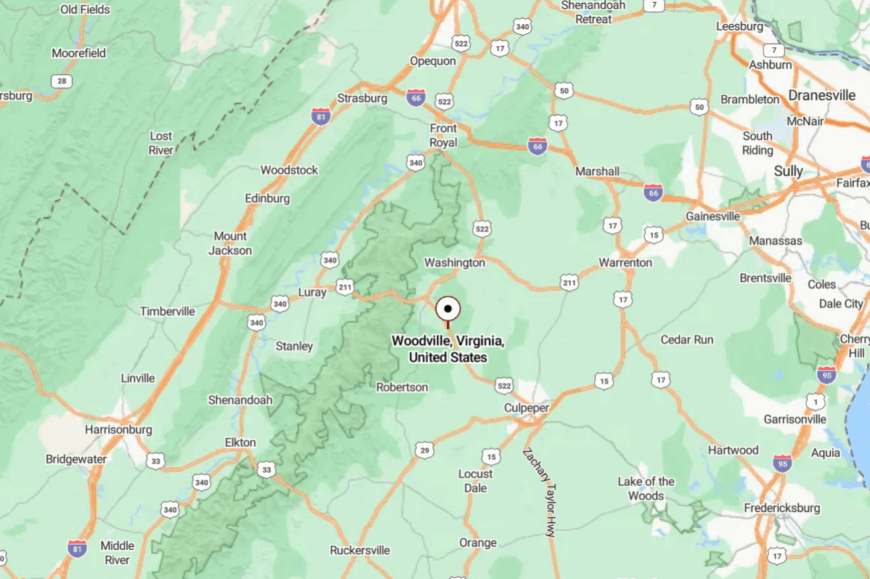
South of Sperryville in Rappahannock County, Woodville sits along US-522 with quick turns onto even quieter lanes. The nearest bigger towns are a half hour away in any direction.
Getting there means letting the shoulders narrow and the fields widen. It’s easy to reach, and easier to stay.
15. Laurel Mills: Millrace Murmur and Riverbend Light
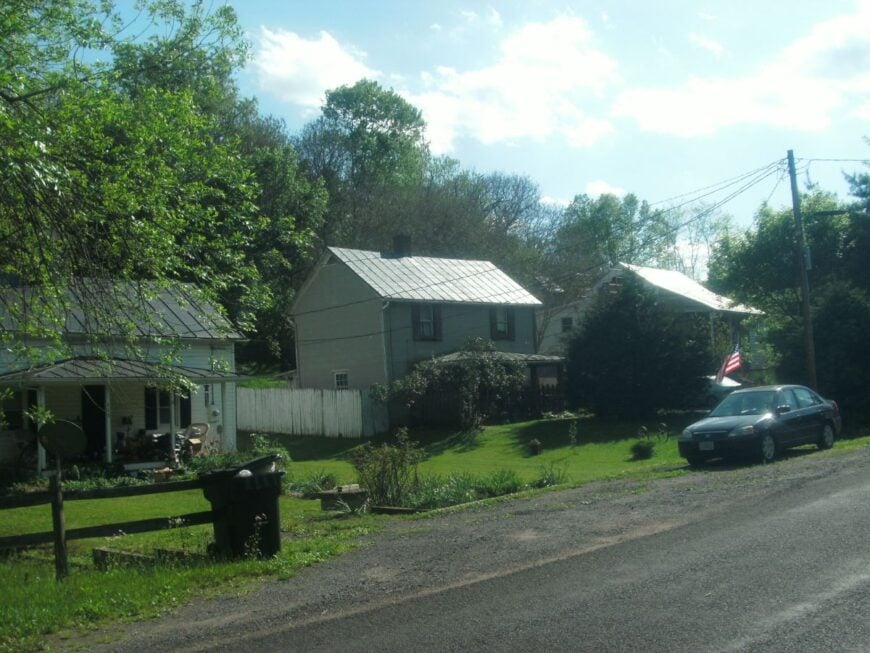
Laurel Mills clusters around an old mill site where the Thornton River turns slow and green. Its tucked-away feel comes from hills that fold in close and a pair of country roads that seem in no hurry to meet.
Porch flags lift in the breeze; the rapids talk just loud enough. Walk the mill bridge for sunset, fish a shaded run, trace stone foundations, or drive a slow loop through pastoral valleys that feel painted on.
Small farms and weekend cabins are the norm, not the exception. The vibe is timeworn and tender, with just enough creak in the floorboards. It’s the kind of quiet that remembers your name.
Where is Laurel Mills?

In southern Rappahannock County near the Culpeper line, Laurel Mills sits a few bends off US-522. You reach it by following narrow lanes that tuck along the river and between low ridges.
GPS works, but the land does the guiding. By the time you arrive, the water has already slowed you down.
14. Bentonville: River Bluffs and Parkside Solitude
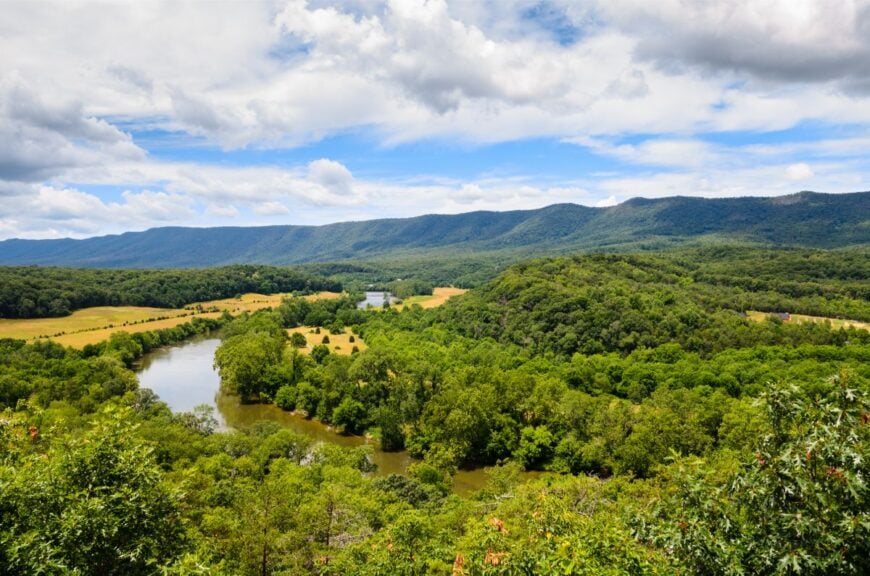
Bentonville lives beside the South Fork of the Shenandoah, a scatter of hollows and bluffs where fog lifts like lace. Seclusion deepens with Shenandoah River State Park on one side and forested hills on the other, leaving only a few quiet roads in.
Osprey hunt the bends; deer step out at the edge of fields. Float the river at first light, climb a bluff trail for valley views, watch stars from a riverside cabin, or wander a country churchyard humming with cicadas.
Outfitters and park visitors mingle with long-timers who farm or guide. The vibe is water-cooled and woods-gentle. It’s a place that asks you to breathe deeper—and you do.
Where is Bentonville?
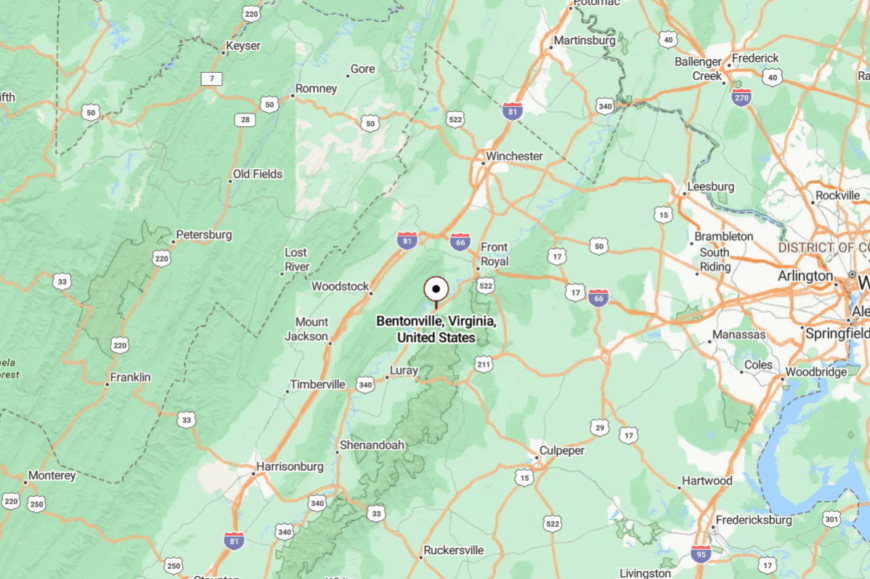
South of Front Royal in Warren County, Bentonville sits about 10 miles from town but a world off I-66’s tempo. Access comes via US-340 and then smaller park and river roads.
The last miles keep close to water and trees. It’s close enough for an afternoon float, far enough to forget the clock.
13. Fort Valley: The Valley Within a Mountain

Fort Valley is a secret folded inside Massanutten Mountain—one way in, one way out, and a long hush in between. Seclusion is the point here: the ridges wrap around like arms and the roads choose curves over speed.
Barns sit square to the wind; creek crossings make music after rain. Hike Passage Creek trails, wade cool runs for trout, visit Elizabeth Furnace’s stone relics, picnic at a grassy pull-off, or catch a leaf-peeper day when the whole valley glows.
Forestry, small farms, and retreats keep things turning softly. The vibe is self-contained and reverent—mountain quiet with a heartbeat. It’s where you remember how big silence can be.
Where is Fort Valley?
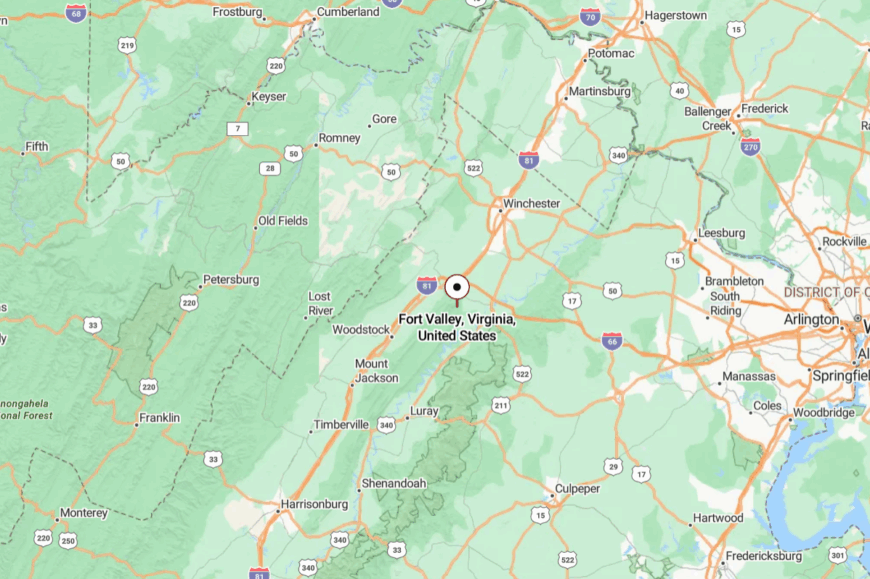
In Shenandoah County between the North and South Forks of the Shenandoah, Fort Valley lies about 15 miles southwest of Strasburg.
You reach it via Fort Valley Road (VA-678), a two-lane ribbon that threads the mountain. No interstates intrude; the ridges keep watch. Close in miles, far in mind.
12. Orkney Springs: Shrine Mont Porches and Spring-Fed Calm
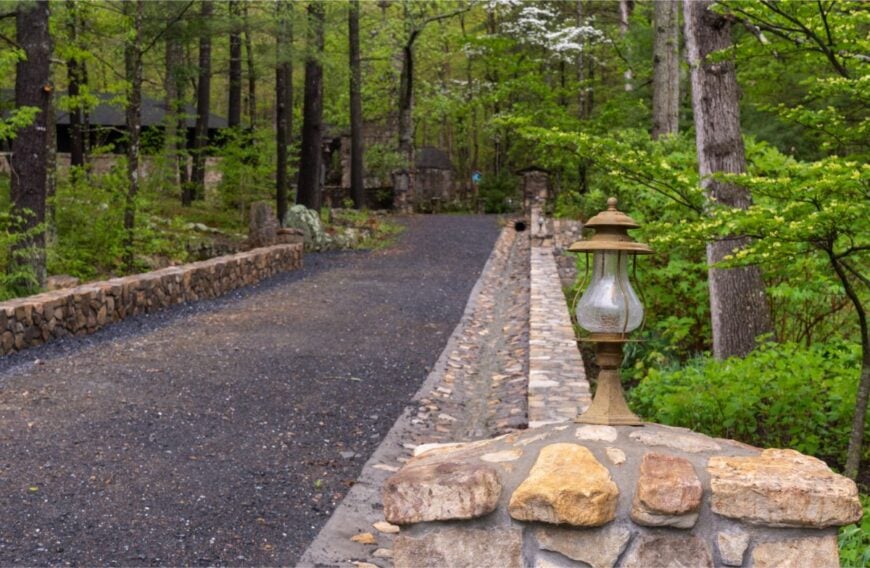
Orkney Springs clusters around old resort buildings and a mountain spring that never stopped telling its story. The village feels secluded because forest and high country hem it in, and the nearest bustle sits a ridge or two away. Porch rockers creak; the evening air smells like pine and rain.
Walk Shrine Mont’s leafy paths, catch summer concerts under rafters, explore hidden chapels, or wander to Bryce Mountain trails just over the hill. Seasonal retreats and the resort tradition anchor the local rhythm.
The vibe is restorative and a little old-world—linen light and hymn-soft nights. It’s the kind of peace that arrives like cool water.
Where is Orkney Springs?
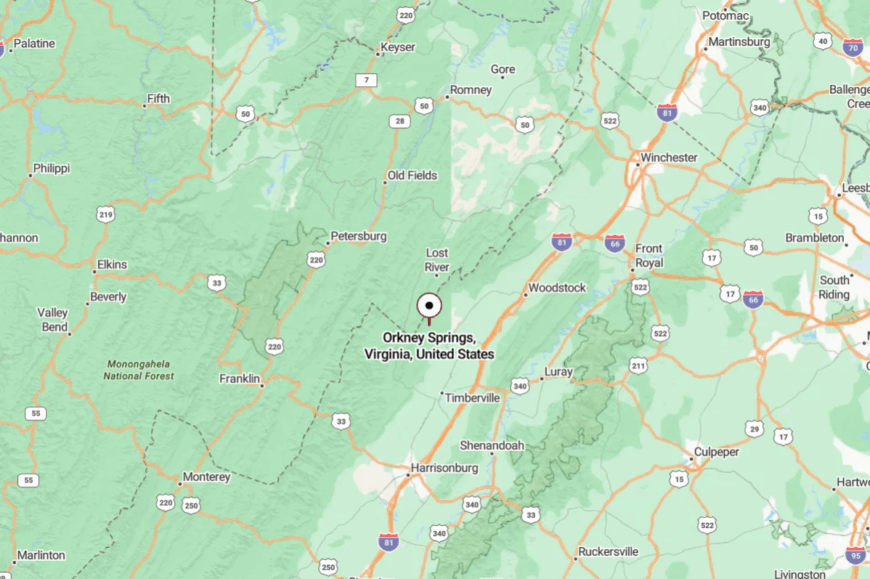
In far western Shenandoah County near the West Virginia line, Orkney Springs sits a few miles from Basye. VA-263 brings you in from US-11 and I-81, then the road narrows under trees.
Mountains close ranks as you climb. It’s close to the resort slopes, yet it feels like a sanctuary.
11. Star Tannery: Last-Lane Farms and Forest Edge

Star Tannery lingers at Frederick County’s edge, a place of long fields, oak ridges, and addresses that take a handshake to find. Seclusion comes from proximity to the state line and a lattice of backroads that prefer dust to traffic.
Mornings are hawks on fence posts; nights are crickets and porch lamps. Hunt autumn colors on Wolf Gap, fish tiny rambling creeks, visit a country cemetery brushed by hayfields, or take a slow drive where the mountains start to rise. Farms, timber, and handyman shops share the week.
The vibe is plainspoken and enduring—quiet that’s built, not borrowed. It’s where the map fades and your sense of place sharpens.
Where is Star Tannery?
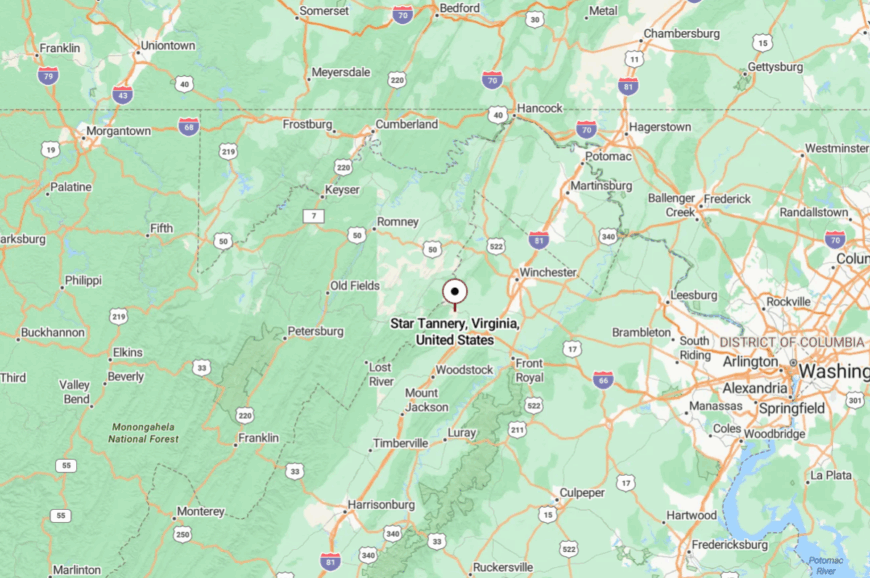
On the far western side of Frederick County, Star Tannery sits near the West Virginia border southwest of Winchester. From US-50 you angle onto Back Mountain roads that slip toward forest and ridge.
The lanes get narrower as the hills get taller. It’s near a city on paper, but the pines insist otherwise.
10. Flint Hill: Peaceful Countryside Community

With an approximate population of just 200 residents, Flint Hill is a quaint village that I’ve come to cherish for its serene atmosphere. Nestled in the heart of Rappahannock County, it’s a place where time seems to slow down.
I enjoy strolling through its quiet streets, exploring the local art galleries and antique shops that reflect the area’s rich history. The surrounding countryside offers plenty of outdoor activities, like hiking in the nearby Shenandoah National Park or visiting local wineries for a taste of Virginia’s burgeoning wine scene.
Agriculture and tourism are the mainstays here, supporting a close-knit community that values simplicity and peace. What makes Flint Hill truly secluded is its untouched landscapes and the absence of bustling crowds, providing a perfect escape into the tranquility of rural life.
Where is Flint Hill?

Flint Hill is located in Northwest Virginia, about 75 miles west of Washington, D.C. Its location at the foothills of the Blue Ridge Mountains adds to its secluded charm, surrounded by rolling hills and farmland as far as the eye can see.
The town is off the beaten path, accessible primarily by country roads that meander through picturesque scenery.
Getting there is a scenic journey in itself, whether you drive along Route 522 or take one of the many winding backroads that lead you deeper into Virginia’s countryside. This distance from major highways and cities ensures that Flint Hill remains a peaceful haven away from the hustle and bustle.
9. Bluemont: Mountain Living with Panoramic Views

Bluemont is a charming village with an approximate population of 300, and it’s one of my favorite spots for mountain living in Virginia. Perched on the eastern slope of the Blue Ridge Mountains, it offers breathtaking panoramic views that never fail to inspire me.
I love visiting the Bluemont Vineyard for a leisurely afternoon of wine tasting, set against a backdrop of rolling hills. Outdoor enthusiasts like me can enjoy hiking along the Appalachian Trail, which passes close by, or explore Great Country Farms for fresh produce and family-friendly activities.
The local economy thrives on agriculture and tourism, with vineyards and farms dotting the landscape. Bluemont’s seclusion comes from its elevated position and the vast expanses of natural beauty that surround it, making it a perfect retreat from the demands of city life.
Where is Bluemont?

Bluemont is situated in Loudoun County, in Northwest Virginia, near the border with West Virginia. It’s about 60 miles west of Washington, D.C., nestled in the mountains, which contributes to its sense of isolation.
The village’s location along Snickersville Turnpike and its proximity to the Blue Ridge Mountains make it feel tucked away from the world. Getting to Bluemont typically involves a scenic drive through countryside roads, with Route 7 providing the main access from the east.
This rural setting, combined with limited development, ensures that Bluemont remains a secluded haven for those seeking peace and natural beauty.
8. Millwood: Historic Village with Secluded Charm
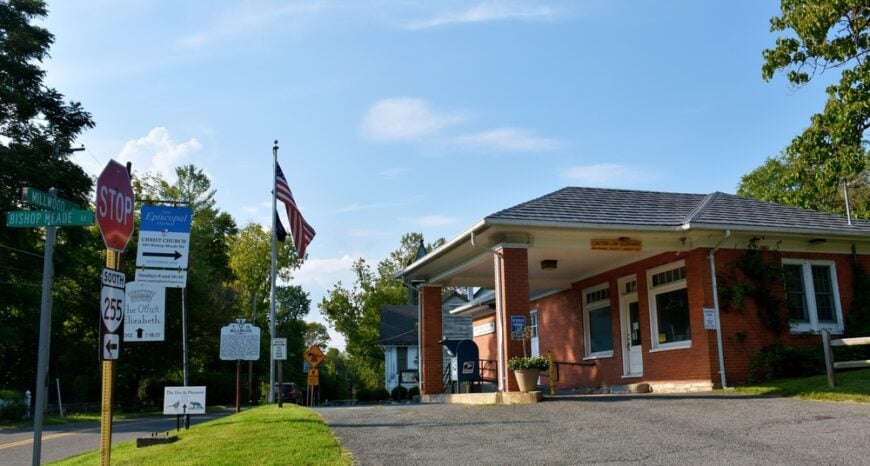
With a population of around 150, Millwood is a historic village that I’ve found to be a treasure trove of charm and tranquility. Steeped in history, the village is home to the Burwell-Morgan Mill, one of the oldest operable grist mills in the country, which I love visiting for a glimpse into the past.
The quiet streets are lined with centuries-old homes surrounded by lush greenery, creating a peaceful atmosphere that’s hard to find elsewhere. Outdoor activities include leisurely walks through the countryside and exploring nearby Locke’s Mill and other historic landmarks.
Agriculture plays a significant role here, with local farms contributing to the area’s rustic character. Millwood’s seclusion is defined by its preservation of history and the expansive rural landscapes that envelop it, offering a serene escape from modern life.
Where is Millwood?

Millwood is located in Clarke County, in Northwest Virginia, just south of the town of Berryville. Nestled between the Blue Ridge Mountains and the Shenandoah River, its position enhances the feeling of being tucked away from the world.
The village is accessible via Route 255, a scenic drive that winds through rolling farmlands and historic estates. Its distance from major highways and urban centers contributes to its secluded nature, making it a hidden gem that’s perfect for those who appreciate history and a slower pace.
For me, reaching Millwood feels like a journey back in time, where the beauty of the past meets the tranquility of the countryside.
7. Markham: Quiet Escape Amidst Orchards

Markham is a tiny community with a population of less than 200, and it’s become one of my favorite places to unwind. Nestled amidst orchards and vineyards, it’s a haven for those who appreciate the simple pleasures of countryside living.
I enjoy visiting Stribling Orchard to pick fresh apples or savoring a glass of wine at Château O’Brien, both local gems that highlight the area’s agricultural richness. The scenery is dotted with low-density housing, ensuring that residents enjoy plenty of space and privacy.
The main industries here revolve around agriculture and viticulture, contributing to Markham’s rural charm. Its seclusion stems from the vast expanses of farmland and the quiet that envelops the area, making it an ideal spot for anyone seeking solitude among nature’s bounty.
Where is Markham?

Located in Fauquier County, Northwest Virginia, Markham sits just off Interstate 66, yet retains a secluded feel due to its rural surroundings.
It’s about 60 miles west of Washington, D.C., but feels worlds away from the city’s hustle. The village is accessible via Exit 18 on I-66, followed by winding country roads that lead you through scenic landscapes.
Despite its proximity to the interstate, Markham’s setting amidst rolling hills and orchards provides a sense of peace and isolation. For me, the journey to Markham is a delightful escape into the heart of Virginia’s countryside.
6. Hume: Countryside Serenity Among Vineyards
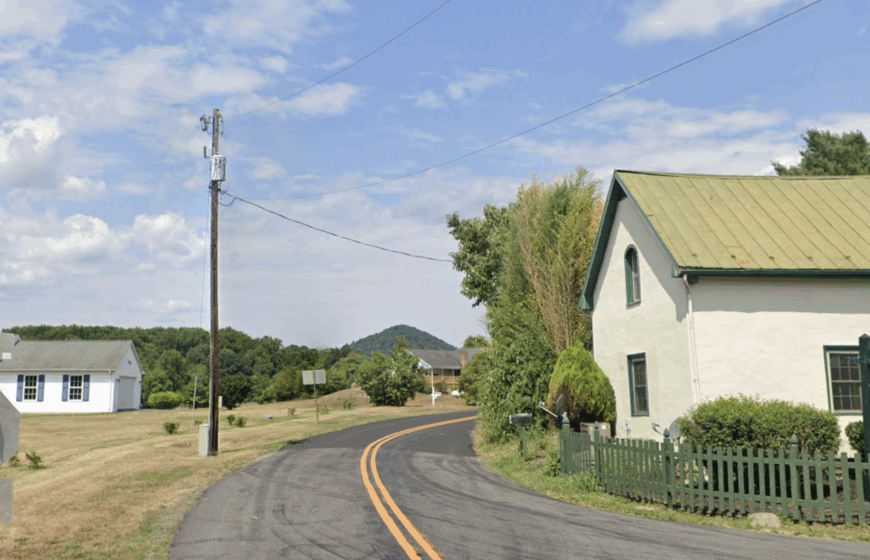
Hume is a peaceful village with an approximate population of around 100, and it’s a place where I’ve found true serenity among the rolling vineyards. The area is renowned for its wineries like Philip Carter Winery and Desert Rose Ranch & Winery, where I’ve enjoyed some of Virginia’s finest wines in a tranquil setting.
The countryside is dotted with farms and open fields, offering ample opportunities for leisurely walks and reconnecting with nature. Agriculture, particularly viticulture, is the main industry here, supporting a way of life that revolves around the land.
What makes Hume secluded is its expansive rural landscapes and the absence of urban development, providing a quiet refuge for those looking to escape the noise and stress of city living.
Where is Hume?

Hume is situated in Fauquier County, in Northwest Virginia, nestled between the towns of Front Royal and Warrenton. It’s about 65 miles west of Washington, D.C., accessible via Route 688 and small country roads that weave through picturesque scenery.
The village’s location away from major highways contributes to its sense of isolation, surrounded by vast farmlands and vineyards.
Getting to Hume involves a peaceful drive through the countryside, which I find to be part of the charm. Its remote setting ensures that Hume remains a hidden gem, perfect for those seeking a secluded spot in Virginia’s wine country.
5. Paris: Tiny Hamlet with Expansive Views

Paris is a tiny hamlet with a population of around 50, and it’s one of those places that captures my heart with its stunning vistas and serene ambience. Perched at the foothills of the Blue Ridge Mountains, it offers expansive views that are simply breathtaking.
I love visiting the Ashby Inn & Restaurant for a delightful meal while soaking in the scenery, or exploring the trails at Sky Meadows State Park nearby. The main industries here revolve around tourism and hospitality, catering to those who seek a peaceful retreat.
Paris’s seclusion is accentuated by its natural barriers—the surrounding mountains—and the large properties that provide residents with private, undisturbed living spaces. It’s a haven for anyone looking to immerse themselves in nature’s beauty away from crowded locales.
Where is Paris?
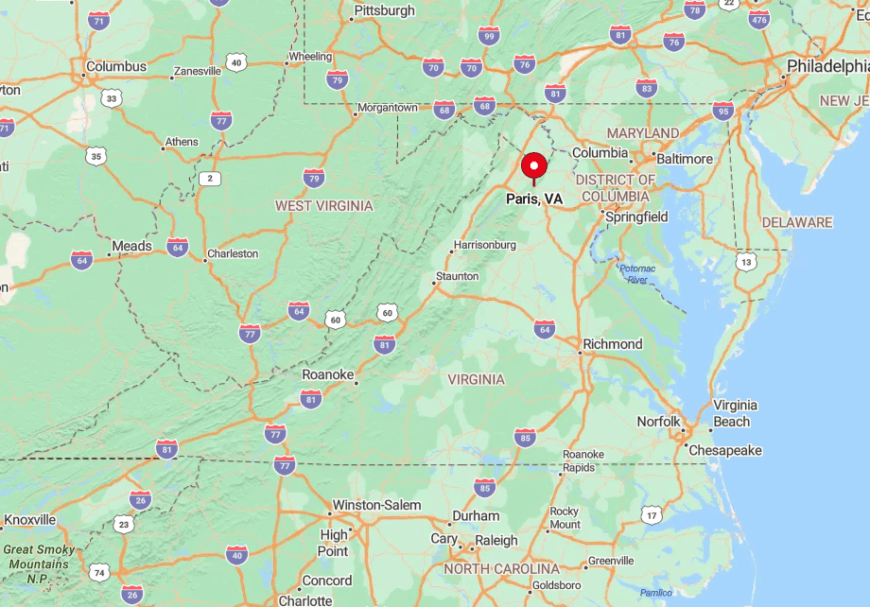
Paris is located in Fauquier County, Northwest Virginia, at the intersection of Route 17 and Route 50, near the Clarke County line.
Its position at the base of the Blue Ridge Mountains enhances its seclusion, with the elevation providing both privacy and panoramic views. The hamlet is about 65 miles west of Washington, D.C., accessible via scenic routes that wind through the countryside.
Getting to Paris involves a journey along Route 50, known as John Mosby Highway, which is a pleasure in itself with its rolling landscapes. The small size of Paris and its surrounding natural features make it an idyllic and secluded destination.
4. Linden: Gateway to Skyline Drive
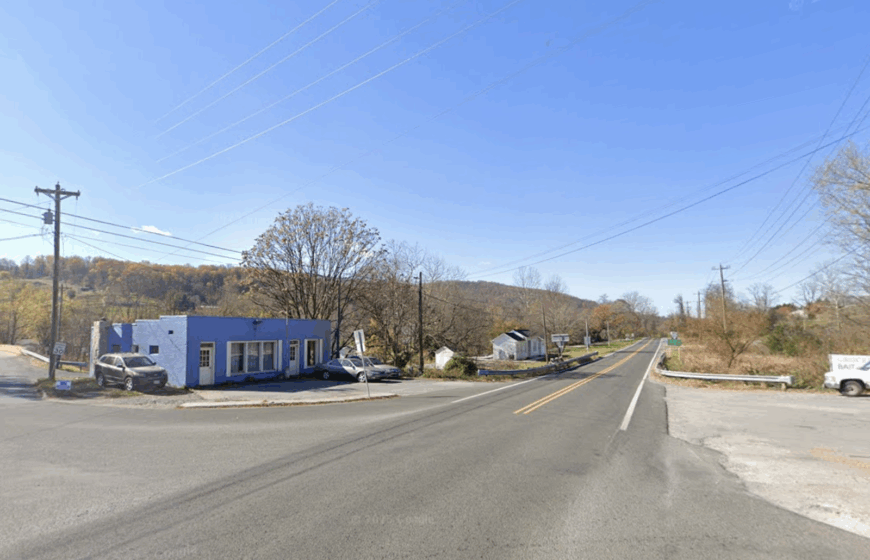
With a population of around 600, Linden is a community that I admire for its natural beauty and tranquil environment. Nestled near the Blue Ridge Mountains, it’s often referred to as the gateway to Skyline Drive, offering easy access to some of Virginia’s most stunning scenic routes.
I enjoy hiking portions of the Appalachian Trail that run close by or visiting the Fox Meadow Winery for a relaxing afternoon. The area is characterized by secluded homes tucked into the hillsides, providing residents with a peaceful retreat surrounded by nature.
The main industries include tourism and viticulture, benefiting from the town’s picturesque setting. Linden’s seclusion is defined by its mountainous terrain and dense forests, making it a perfect escape for those seeking tranquility amidst natural beauty.
Where is Linden?

Linden is located in Warren County, with parts extending into Fauquier County, in Northwest Virginia. It’s approximately 70 miles west of Washington, D.C., accessible via Interstate 66 and Route 55.
The town’s proximity to the Blue Ridge Mountains and the Shenandoah National Park enhances its secluded feel, with winding roads leading through forests and hills.
Getting to Linden involves a picturesque drive that I always find refreshing, leaving the cityscape behind. Its location away from urban centers and surrounded by natural landscapes ensures that Linden remains a serene gateway to the majestic Skyline Drive.
3. Orlean: Timeless Charm in Fauquier County
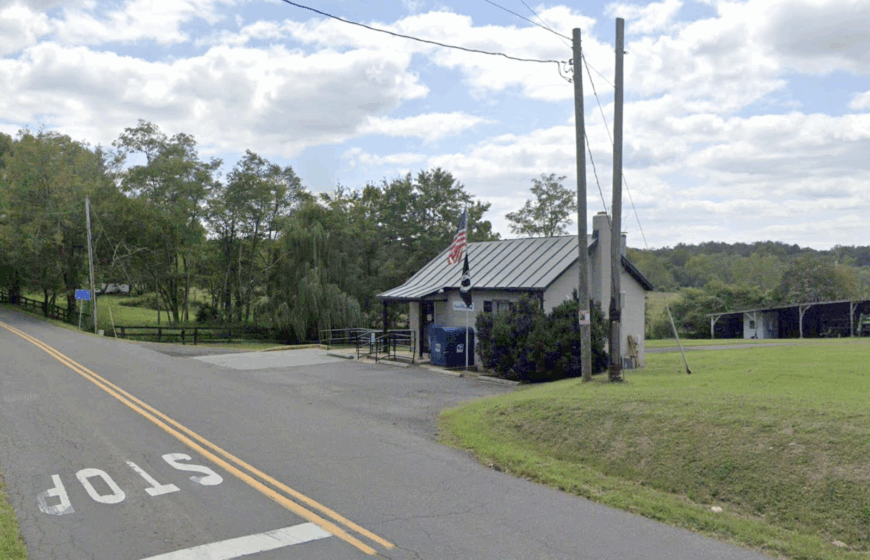
Orlean is a quaint village with an approximate population of 150, and it’s a place where I feel transported to a simpler time. The tight-knit community revolves around landmarks like the Orlean Market & Pub, which serves as a gathering spot for locals and visitors alike.
I enjoy the peacefulness of the area, with spacious properties that offer privacy and a strong connection to the land. Outdoor activities like horseback riding and hiking are popular, thanks to the surrounding countryside’s open spaces.
Agriculture and small businesses form the backbone of the local economy, emphasizing the village’s rural roots. Orlean’s secluded nature is due to its remote location and the undisturbed landscapes that envelop it, making it an ideal spot for those seeking a quiet, country lifestyle.
Where is Orlean?
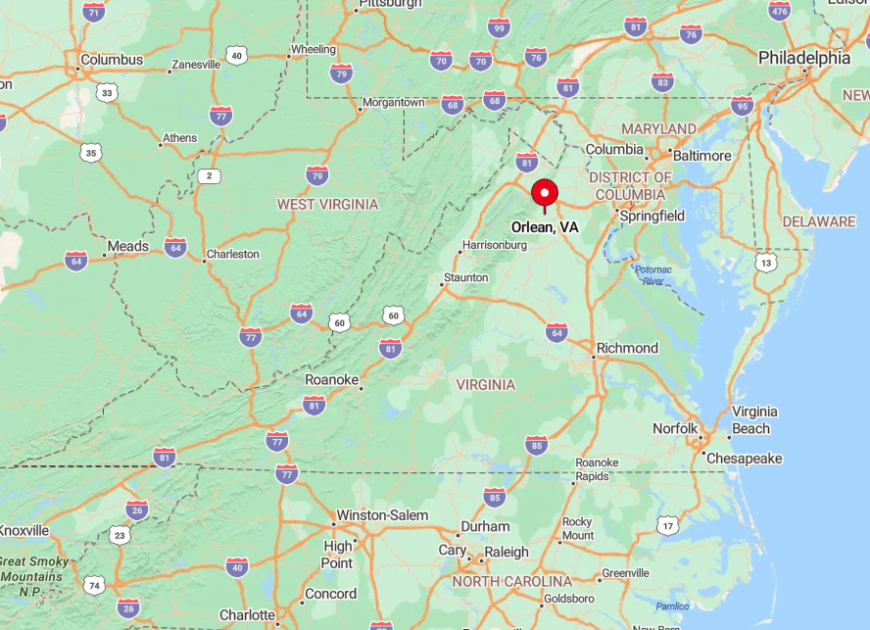
Located in Fauquier County, Northwest Virginia, Orlean is about 60 miles west of Washington, D.C. The village sits along Leeds Manor Road (Route 688), far from major highways, which contributes to its sense of isolation. The drive to Orlean takes you through rolling hills and farmland, a journey I find both relaxing and scenic.
The lack of urban development and the expansive rural surroundings make Orlean a secluded gem in the Virginia countryside. Getting there is part of the experience, allowing you to unwind even before you arrive.
2. Huntly: Rural Retreat with Rolling Hills
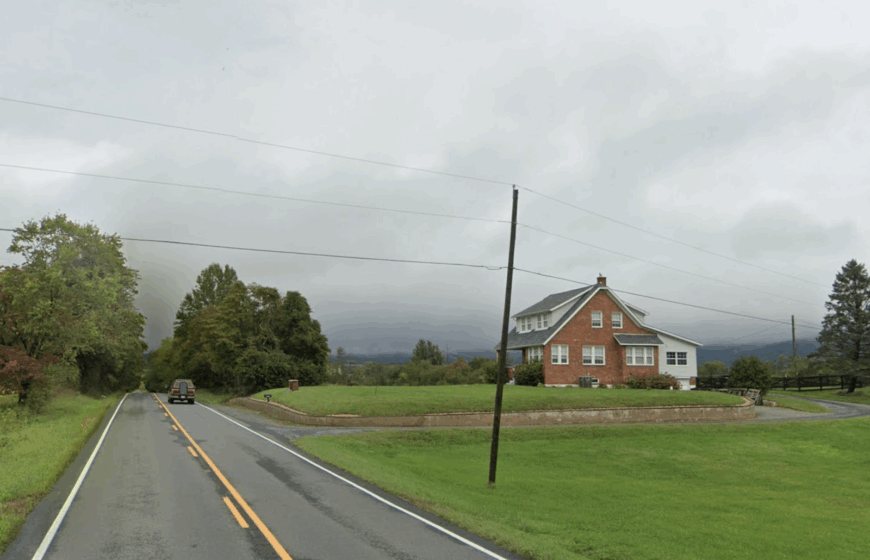
Huntly is a small community with a population of under 200, and it’s one of my top choices for a rural retreat. The area is characterized by rolling hills and vast open spaces that provide breathtaking views and a sense of freedom.
I particularly enjoy visiting the local wineries like Narmada Winery and Gadino Cellars, which offer delicious wines and a relaxing atmosphere. The low population density means that homes are spread out, giving residents plenty of privacy and room to breathe.
Agriculture and viticulture are the main industries, reflecting the area’s fertile lands and commitment to preserving its rural heritage. Huntly’s seclusion is evident in its quiet roads and the serene landscapes that surround it, making it an ideal spot for those looking to escape the noise of city life.
Where is Huntly?

Situated in Rappahannock County, Northwest Virginia, Huntly is about 70 miles west of Washington, D.C. It’s accessible via Route 522, which winds through scenic countryside, enhancing the feeling of remoteness. The village’s location, nestled among the foothills of the Blue Ridge Mountains, contributes to its secluded nature.
I find the journey to Huntly to be peaceful and restorative, as the landscape shifts from urban to rural. The absence of major commercial development ensures that Huntly remains a tranquil haven where the pace of life is slow and the surroundings are truly pastoral.
1. Browntown: A Hidden Gem in the Shenandoah Mountains
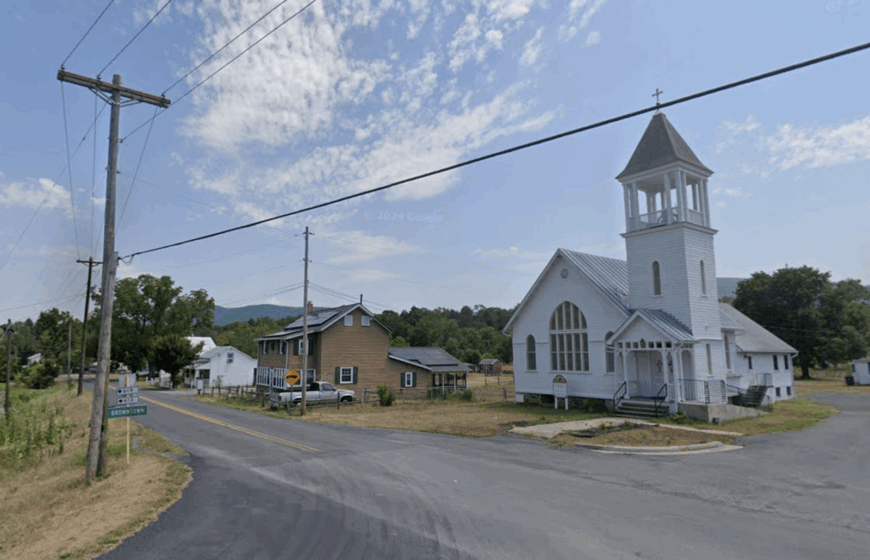
With a population of approximately 300, Browntown is my ultimate secluded getaway in Northwest Virginia. Nestled deep within the Shenandoah Mountains, it’s surrounded by national forest, offering unparalleled peace and natural beauty.
I love exploring the nearby Shenandoah National Park, with hiking trails that lead to stunning vistas and waterfalls. The Shenandoah River is also close by, providing opportunities for canoeing and fishing that I find both relaxing and invigorating.
The main industries here are agriculture and tourism, but on a scale that maintains the town’s quiet charm. Browntown’s seclusion is a result of its remote location amidst vast forested areas, making it the perfect spot for those wanting to disconnect from the hustle and bustle of urban life.
Where is Browntown?
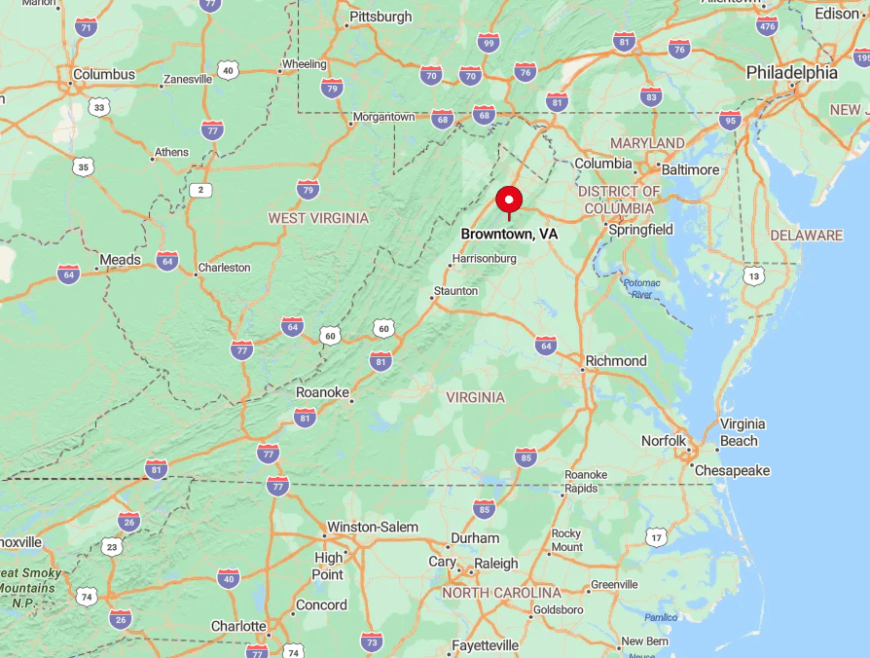
Browntown is located in Warren County, Northwest Virginia, about 75 miles west of Washington, D.C. It’s accessible via Browntown Road (Route 649), a scenic route that winds through the countryside and into the mountains.
The town’s position, enveloped by the Shenandoah National Park and George Washington National Forest, enhances its sense of isolation.
Getting there involves a journey through forested roads and rolling hills, which I find to be a serene prelude to the tranquility that awaits. Browntown’s remote setting ensures that it remains a hidden gem, offering a true escape into nature for those who seek it.

